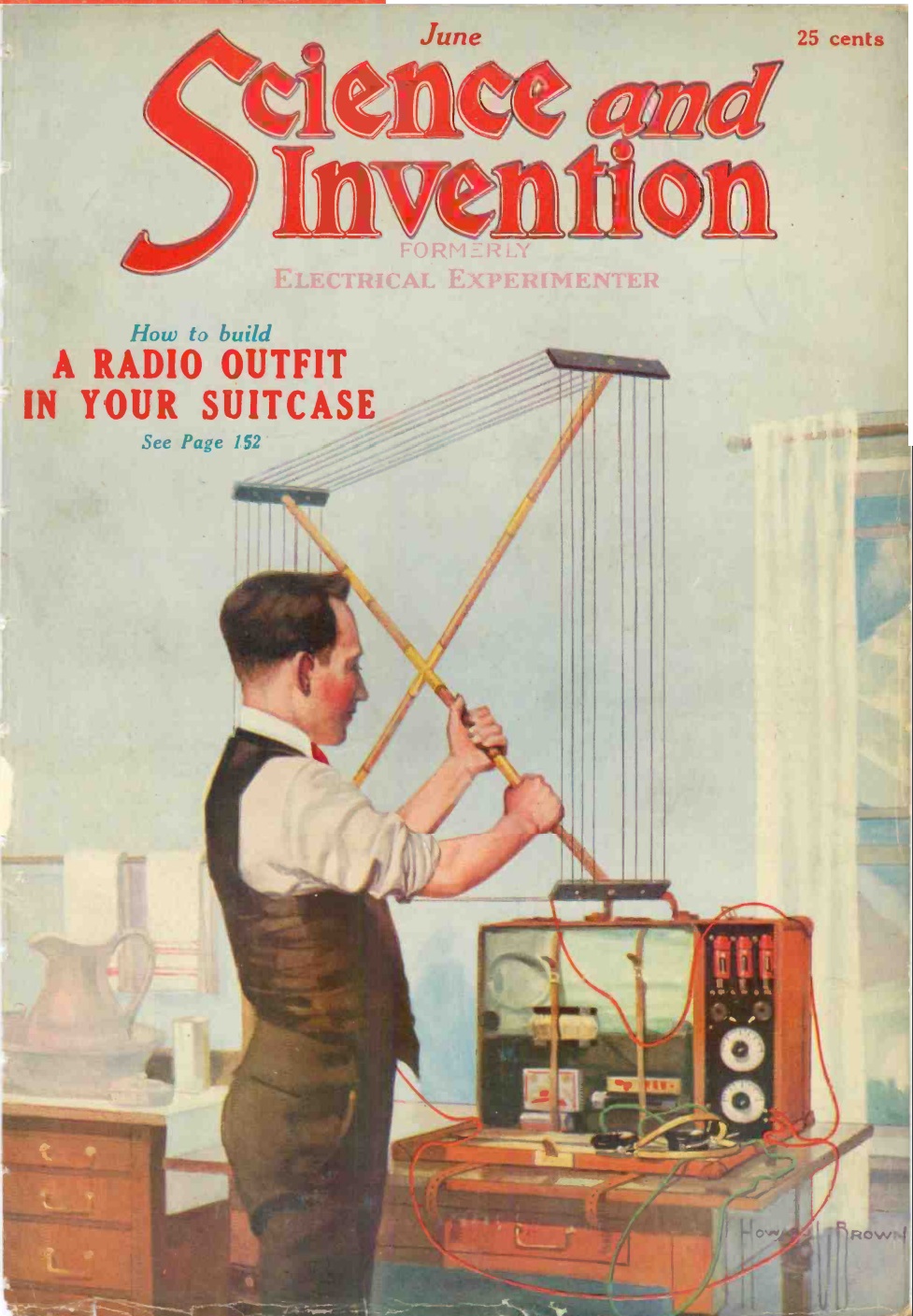 A hundred years ago this month, the June 1922 issue of Science and Invention carried the plans for this vacation-time radio receiver, by the magazine’s radio editor Robert E. Lacault.
A hundred years ago this month, the June 1922 issue of Science and Invention carried the plans for this vacation-time radio receiver, by the magazine’s radio editor Robert E. Lacault.
The accompanying article points out that the real radio fan couldn’t conceive of a vacation without a radio set. Ever since the author first listened to a radio signal in 1910, he had never failed to carry some sort of radio set on vacation. The latest was this compact and efficient set.
The three-tube regenerative set tuned 180 to 500 meters (600 to 1670 kHz), which at the time covered both broadcast and amateur frequencies. The author reported pulling in amateur signals from 200 miles away, and being able to hear broadcast stations quite clearly for almost 100 miles.
While an ordinary antenna could be used, the set shown here had an integrated loop antenna which could be quickly put into service. Either dry cells or storage batteries could be used for the A and B batteries.
